Aprons should be changed frequently to maintain food safety and prevent contamination.
Aprons In Food Safety: The Basics
When it comes to maintaining food safety in a kitchen or restaurant setting, aprons play a crucial role. Aprons not only protect the clothing of the food handlers from spills and stains but also serve as a barrier between the food and potential contaminants. In this section, we will explore the importance of aprons in maintaining food safety and the role they play in preventing cross-contamination.
Today in this article, we will discuss how often should aprons be changed food safety
Read More: How to Wash a Safety Vest?
Importance of aprons in maintaining food safety
Aprons are an essential part of the uniform for food handlers as they help maintain cleanliness and hygiene in the kitchen. Here are a few reasons why aprons are crucial for food safety:
- Protect against spills and stains: Aprons act as a protective shield, preventing spills and stains from coming into direct contact with the clothing of the food handler. This is especially important when handling liquids or ingredients that can cause permanent discoloration.
- Minimize the spread of germs: By wearing an apron, food handlers minimize the risk of transferring bacteria or any other potentially harmful microorganisms from their clothing to the food they handle. This helps reduce the chances of foodborne illnesses and contamination.
- Promote cleanliness and professionalism: Aprons create a clean and professional appearance for the food handlers, instilling confidence in customers that their food is prepared in a hygienic environment. This is especially important in settings where customers can see the kitchen or food preparation area.
Role of aprons in preventing cross-contamination
Cross-contamination is a major concern in the food industry, as it can lead to the spread of foodborne illnesses. Aprons play a vital role in preventing cross-contamination by:
- Creating a physical barrier: Aprons act as a physical barrier that limits the direct contact between food and potential contaminants, such as dirt, hair, or other particles that may be present on clothing. This reduces the chances of cross-contamination during food handling processes.
- Regularly changing aprons: It is essential to change aprons regularly, especially when handling different types of food or moving from one task to another. By changing aprons frequently, food handlers can prevent the transfer of allergens or pathogens between different food items, minimizing the risk of cross-contamination.
- Proper laundering and sanitization: To ensure effective prevention of cross-contamination, aprons should be laundered and sanitized properly. Regular washing with hot water and detergent helps remove any traces of bacteria or contaminants, maintaining the cleanliness and hygiene of the aprons.
By understanding the importance of aprons in maintaining food safety and their role in preventing cross-contamination, food handlers can ensure that they are taking necessary precautions to protect the health and well-being of their customers.
Understanding The Risk Factors
Proper food safety practices are crucial in the food industry to prevent contamination and protect the health of consumers. While many aspects contribute to maintaining food safety, one often overlooked factor is the use and maintenance of aprons. Aprons are an essential protective garment worn by food handlers, but how often should they be changed to ensure food safety? To answer this question, it is essential to understand the risk factors and the impact of contaminated aprons on food safety.
Factors that contribute to apron contamination
Aprons can become a breeding ground for bacteria and other contaminants due to various factors. Understanding these risk factors is vital in determining how often aprons should be changed to maintain food safety:
- Prolonged use: Extended periods of wearing the same apron can result in the accumulation of food particles, residues, and bacteria. This can lead to cross-contamination if the apron is not changed regularly.
- Handling raw and cooked foods: Aprons used to handle raw meats and other potentially hazardous foods can easily become contaminated. If the same apron is then used to handle cooked foods, there is a high risk of cross-contamination.
- Poor storage and handling: Improper storage and handling of aprons can also contribute to contamination. Aprons should be stored in designated areas away from potential sources of contamination, such as cleaning supplies or raw food.
- Lack of proper cleaning: Failure to clean aprons thoroughly after each use allows bacteria to multiply and pose a risk to food safety.
Impact of contaminated aprons on food safety
The presence of contaminants on aprons can have severe consequences for food safety. Here are some of the potential impacts:
- Pathogen transmission: Bacteria, viruses, and other pathogens can easily transfer from a contaminated apron to food, leading to foodborne illnesses.
- Cross-contamination: Aprons that are not changed regularly can spread contaminants from one food item to another, increasing the risk of cross-contamination.
- Deterioration of food quality: Contaminated aprons can compromise the quality and taste of food, affecting customer satisfaction and reputation.
Given the potential risk factors and impacts, it is crucial to establish proper guidelines for changing aprons to ensure food safety. These guidelines should include factors such as the type of food being handled, the duration of use, and the potential for contamination. Regular evaluation and training of food handlers regarding apron hygiene can further enhance food safety measures.
Learn More: OSHA Class 3 Safety West Requirements
Factors To Consider: How Often Should Aprons Be Changed
Aprons play a crucial role in maintaining food safety and hygiene in a variety of industries, including restaurants, catering services, and food manufacturing. Regularly changing aprons is essential to prevent cross-contamination, maintain cleanliness, and adhere to food safety regulations. Several factors should be taken into account when determining how often aprons should be changed.
Frequency of apron changes based on usage
The frequency of apron changes varies depending on the type of usage and the industry. Here are some common scenarios and the recommended intervals for apron changes: 1. Daily use: In busy settings where aprons are worn daily, such as commercial kitchens, it is advisable to change aprons at the end of each shift or every 8 hours. This ensures that any potential contaminants acquired during the work period are not carried over to the next day’s operations. 2. High-risk tasks: Certain tasks pose a higher risk of contamination, such as handling raw meat or working with allergens. In these instances, aprons should be changed more frequently, ideally every 2-4 hours, depending on the intensity of the task. This reduces the chances of cross-contamination and minimizes the risk of foodborne illnesses. 3. Spills and stains: Whenever an apron is soiled with food spills, stains, or bodily fluids, it should be changed immediately. Such incidents can compromise food safety and hygiene, making prompt apron change crucial to maintain cleanliness and meet health standards.
Guidelines and recommendations for apron change intervals
While the frequency of apron changes can vary based on specific circumstances, there are general guidelines and recommendations to consider: 1. Manufacturer instructions: Always refer to the manufacturer’s instructions for guidelines on apron maintenance and replacement. Manufacturers often provide specific recommendations for their products, taking into account the material, construction, and durability of the apron. 2. Regulatory requirements: Different countries and regions have specific regulations concerning food safety and hygiene. Familiarize yourself with these regulations to ensure compliance and determine apron change intervals that align with the local guidelines. 3. Visual inspection: Regularly inspect aprons for signs of wear, tear, or damage. If an apron shows signs of degradation, such as thinning fabric, loose threads, or holes, it should be promptly replaced, regardless of the recommended change interval. 4. Cross-contamination risks: Evaluate the potential for cross-contamination in your particular work environment. Consider factors such as the types of food handled, the presence of allergens, and the risk of bacterial growth. Adapting the apron change frequency accordingly can help minimize the risk of contamination. By considering the frequency of apron changes based on usage and following the guidelines and recommendations, you can ensure food safety, maintain hygiene standards, and protect the well-being of both customers and employees. Remember, regular and timely apron changes are crucial in upholding the highest standards of cleanliness and preventing potential health risks.
Assessing Apron Contamination Levels
Regular assessments of apron contamination levels are crucial for maintaining food safety and preventing cross-contamination in food handling environments. Aprons are often exposed to various contaminants, including food spills, bacteria, and other potentially harmful substances. Evaluating apron cleanliness can help detect potential risks and ensure that proper hygiene protocols are followed consistently. In this article, we will explore the methods for evaluating apron cleanliness and highlight the importance of regular inspections and monitoring to uphold food safety standards.
Methods for Evaluating Apron Cleanliness
To accurately assess apron contamination levels, several methods can be utilized. By employing these techniques, food establishments can ensure that their aprons meet the necessary cleanliness standards:
- Visual Inspection: Conducting regular visual inspections is the simplest and quickest way to identify any visible signs of contamination on aprons. This method involves examining the aprons for stains, food particles, or discoloration that may indicate potential contamination.
- Microbiological Testing: Microbiological testing involves taking samples from aprons and analyzing them for the presence of harmful bacteria or pathogens. This method provides a more comprehensive assessment of apron contamination levels and helps identify potential risks that may not be visible to the naked eye.
- UV Light Inspection: Using ultraviolet (UV) light can help identify bacteria or organic substances that may not be easily visible under normal lighting conditions. UV light can reveal hidden contamination, making it a valuable tool for evaluating apron cleanliness.
Importance of Regular Inspections and Monitoring
Regular inspections and monitoring play a vital role in upholding food safety standards and preventing potential risks associated with contaminated aprons. Here are some reasons why conducting regular inspections and monitoring is essential:
- Preventing Cross-Contamination: Contaminated aprons can lead to cross-contamination, transferring harmful bacteria or allergens onto food products. Regular inspections ensure that aprons are clean and free from any potential contaminants, minimizing the risk of cross-contamination.
- Ensuring Compliance: Regular inspections help ensure compliance with food safety regulations and industry standards. By implementing a systematic inspection process, food establishments can demonstrate their commitment to providing safe and hygienic food handling practices.
- Identifying Hygiene Protocol Gaps: Inspections help identify any gaps or deficiencies in existing hygiene protocols. By regularly monitoring apron cleanliness and addressing any issues promptly, food establishments can improve their overall hygiene practices and minimize the potential for foodborne illnesses.
In conclusion, assessing apron contamination levels is crucial for maintaining food safety. By employing methods such as visual inspection, microbiological testing, and UV light inspection, food establishments can accurately evaluate apron cleanliness. Regular inspections and monitoring are essential to prevent cross-contamination, ensure compliance with regulations, and identify any gaps in hygiene protocols. By prioritizing apron cleanliness, food establishments can create a safe and hygienic environment for food handling.
Best Practices For Apron Maintenance
Proper handling and storage of aprons
Effective handling and storage of aprons are crucial for maintaining food safety standards. Follow these best practices:
- Always handle aprons with clean hands to prevent potential cross-contamination.
- Avoid leaving aprons on work surfaces or in high-traffic areas where they may come in contact with contaminants.
- Designate designated areas for apron storage to minimize the risk of contamination. Ideally, use wall-mounted hooks or hangers to keep them off the floor, away from moisture, and easily accessible.
- When not in use, fold aprons neatly and store them in a clean, dry place to prevent the buildup of bacteria or mold.
Cleaning and sanitizing techniques for aprons
Regular and proper cleaning is essential to maintain the cleanliness and safety of aprons. Consider the following techniques:
- Pre-rinse: Before laundering, pre-rinse aprons to remove any excess dirt or food particles.
- Separate laundry: Wash aprons separately from other clothing items to prevent the transfer of potentially harmful bacteria.
- Choose appropriate cycles: Follow the manufacturer’s instructions for the appropriate water temperature, cycle, and detergent to effectively clean aprons.
- Sanitize: Consider using bleach or sanitizing agents during the wash cycle to ensure proper disinfection.
- Thorough drying: After laundering, ensure aprons are fully dried to prevent the growth of mold or mildew.
- Inspect and replace: Regularly inspect aprons for signs of wear and tear, such as holes or fraying. Replace aprons as needed to maintain their effectiveness.
Training And Education
Training and Education Proper training and education on apron hygiene is crucial in maintaining food safety standards within any establishment. By ensuring that staff members are well-informed and educated on the importance of apron hygiene, businesses can significantly reduce the risk of cross-contamination and maintain a clean and safe environment for both employees and customers. In this section, we will explore the importance of educating staff on apron hygiene and provide steps for implementing effective training programs.
Importance of educating staff on apron hygiene
When it comes to food safety, educating staff on the proper ways to handle and clean aprons is essential. By understanding the importance of maintaining clean aprons, employees are more likely to adhere to food safety protocols and reduce the risk of foodborne illnesses. Here are some key reasons why educating staff on apron hygiene is crucial:
- Prevention of cross-contamination: Proper training can help staff members understand how cross-contamination occurs and the role that aprons can play in the spread of harmful bacteria. By educating them on the importance of changing aprons regularly and avoiding contact with contaminated surfaces, businesses can minimize the risk of cross-contamination and ensure food safety.
- Compliance with food safety regulations: Educating staff on apron hygiene not only helps maintain food safety but also ensures compliance with local health regulations. By incorporating training on apron hygiene into their routines, businesses can demonstrate their commitment to food safety and avoid potential penalties and reputational damage.
- Promotion of customer trust and confidence: Customers expect clean and hygienic food establishments, and educating staff on apron hygiene can help meet these expectations. By showcasing a commitment to food safety through well-trained staff, businesses can enhance customer trust and confidence, ultimately leading to increased patronage and positive reviews.
Steps for implementing effective training programs
Implementing effective training programs is crucial to ensure that staff members are knowledgeable about apron hygiene and understand their role in maintaining food safety. Here are the steps for creating an effective training program:
- Assess the training needs: Begin by identifying the specific areas where staff members may require training on apron hygiene. This can be done through observations, feedback from employees, and reviewing any previous incidents related to food safety.
- Develop a comprehensive training curriculum: Create a training curriculum that covers the essential topics related to apron hygiene, such as proper handling, storage, and cleaning procedures. Include practical demonstrations, videos, and interactive activities to engage employees and enhance learning.
- Conduct regular training sessions: Schedule regular training sessions to ensure that all staff members receive the necessary education on apron hygiene. These sessions can be conducted during onboarding, as refresher courses, or when implementing new protocols.
- Provide visual aids and resources: Offer visual aids, such as posters or infographics, that outline the key points related to apron hygiene. Additionally, provide employees with access to written resources, such as training manuals or online materials, that they can refer to for ongoing learning.
- Enforce accountability and reinforcement: Hold employees accountable for following apron hygiene protocols by regularly monitoring and providing feedback. Reinforce the importance of apron hygiene through ongoing reminders, discussions during team meetings, and incentivizing adherence to food safety practices.
By implementing these steps, businesses can create training programs that effectively educate staff members on apron hygiene, leading to improved food safety practices and reduced risks of contamination.
Read More About: Are Black Safety Vests OSHA Approved
Ensuring Compliance With Food Safety Regulations
When it comes to food safety, every step in the process matters – including the hygiene of aprons worn by food handlers. Aprons serve as a protective barrier between food contact surfaces and potential contaminants, making it crucial to maintain a high standard of cleanliness. In this blog post, we will delve into the specific regulations surrounding apron hygiene and explore the consequences that can arise from non-compliance with apron-changing guidelines.
Overview of relevant regulations pertaining to apron hygiene
To maintain food safety standards, various regulations have been put in place that specifically address the cleanliness and frequency of apron changing. These regulations not only ensure the safety of consumers but also safeguard the reputation of businesses in the food industry. Some of the key regulations include:
| Regulation | Description |
|---|---|
| Food Safety Modernization Act (FSMA) | Mandates the implementation of preventive controls throughout the food supply chain, including proper sanitation practices such as regular apron changing. |
| Food Code | Provides guidelines and recommendations for food safety practices, including the frequency and method of apron changing. |
| Hazard Analysis and Critical Control Points (HACCP) | Requires businesses to identify, evaluate, and control potential hazards, including the risk of cross-contamination through soiled aprons. |
- Regulations such as the FSMA and Food Code serve as a framework for food safety practices and highlight the significance of maintaining clean and hygienic aprons.
- By adhering to these regulations, businesses can minimize the risk of foodborne illnesses and demonstrate their commitment to the well-being of their customers.
Consequences of non-compliance with apron-changing guidelines
Failure to comply with apron-changing guidelines can have severe consequences for both businesses and consumers. Some of the risks associated with non-compliance include:
- Foodborne Illness Outbreaks: Soiled aprons can harbor harmful bacteria, leading to cross-contamination and potential outbreaks of foodborne illnesses. This can result in health risks to consumers and damage to the reputation of the business.
- Legal Action and Penalties: Non-compliance with food safety regulations, including apron hygiene guidelines, can lead to legal consequences. Businesses may face fines, closure, and even criminal charges in severe cases of non-compliance.
- Loss of Trust and Customers: Consumers prioritize food safety when choosing where to dine or purchase food products. Non-compliance can tarnish a business’s reputation, leading to a loss of trust and loyal customers.
It is essential for businesses in the food industry to prioritize apron hygiene and comply with the regulations set forth by food safety authorities. By doing so, they can protect the health of their customers, avoid legal repercussions, and maintain a positive image in the industry.
Learn More About: What Should I Look The Difference Between Class 2 Vs Class 3 Safety Vest?
The Role Of Management And Leadership
In ensuring the highest standards of food safety, the role of management and leadership in implementing and enforcing apron hygiene protocols cannot be overstated. Effective management plays a critical part in creating a culture of awareness and accountability, ensuring that all staff members understand the importance of regular apron changes. This article explores the responsibilities of management in enforcing apron hygiene protocols and strategies for fostering a culture of awareness and accountability.
Responsibilities of Management in Enforcing Apron Hygiene Protocols
Management holds a significant responsibility in creating and enforcing apron hygiene protocols to maintain food safety. By clearly outlining these protocols, management ensures that every staff member understands the guidelines and expectations. This includes:
- Establishing a clear apron policy: Management must create a comprehensive apron policy that defines how often aprons should be changed. This policy should be communicated and made easily accessible to all staff members, making it clear that compliance is non-negotiable.
- Providing training and education: It is the responsibility of management to provide thorough training and education on the importance of apron hygiene. This includes explaining the risks associated with wearing dirty aprons and demonstrating proper apron changing techniques.
- Monitoring and enforcement: Management should regularly monitor and enforce compliance with apron hygiene protocols. This includes conducting random checks to ensure that staff members are adhering to the established guidelines and promptly addressing any violations.
- Setting an example: The leadership team should lead by example and consistently follow apron hygiene protocols. By doing so, they establish a culture of accountability and demonstrate the importance of these protocols.
Strategies for Fostering a Culture of Awareness and Accountability
Fostering a culture of awareness and accountability is crucial for maintaining food safety and ensuring that apron hygiene protocols are consistently followed. Here are some effective strategies that management can implement:
- Regular training sessions: Conduct regular training sessions to reinforce the importance of apron hygiene and provide updates on any changes or improvements to the protocols. These sessions can serve as reminders and opportunities for staff members to ask questions or share feedback.
- Clear communication channels: Establish open communication channels where staff members can raise concerns or report any issues related to apron hygiene. This can be done through suggestion boxes, email, or regular meetings.
- Recognition and rewards: Recognize and reward staff members who consistently adhere to apron hygiene protocols. This can instill a sense of pride and encourage others to follow suit.
- Regular audits and inspections: Conduct regular audits and inspections to evaluate compliance with apron hygiene protocols. This not only helps identify areas for improvement but also sends a strong message that management takes apron hygiene seriously.
By implementing these strategies and assuming their responsibilities, management can create a workplace culture that prioritizes apron hygiene and ultimately promotes food safety.
Case Studies: Success Stories In Apron Hygiene
Implementing effective apron maintenance practices is essential for ensuring food safety and preventing cross-contamination in the kitchen. In this section, we will explore successful examples of organizations that have prioritized apron hygiene and reaped the benefits. These case studies serve as a source of inspiration and offer valuable insights for establishments seeking to improve their apron maintenance practices.
Examples of Organizations that have Implemented Effective Apron Maintenance Practices
| Organization | Approach Taken | Results |
|---|---|---|
| Restaurant A | Implemented a strict apron changing schedule based on usage and visible signs of contamination. Provided staff with multiple aprons to rotate throughout the day. Training sessions conducted on proper apron care and hygiene. |
|
| Hotel B | Invested in disposable aprons and encouraged staff to change them after every task or when they have come into contact with potentially hazardous substances. |
|
| Catering Company C | Implemented a color-coded apron system, assigning specific colors to different areas of the kitchen (e.g., red for raw meat, green for vegetables). Staff trained to change aprons when moving between zones. |
|
Positive Outcomes and Lessons Learned
- Implementing regular apron changing schedules and providing multiple aprons for staff can lead to a significant reduction in cross-contamination incidents and improved hygiene standards.
- Investing in disposable aprons eliminates laundry requirements and ensures a fresh apron is used for every task, enhancing overall cleanliness and customer perception.
- Utilizing a color-coded apron system assists in preventing cross-contamination between different areas of the kitchen and promotes compliance with food safety regulations.
- Training staff on proper apron care and hygiene practices is crucial for successful implementation and maintenance of apron hygiene protocols.
- Regular monitoring and evaluation of apron maintenance practices help identify areas for improvement and ensure ongoing adherence to food safety standards.
Learning from these success stories, establishments can tailor their apron maintenance practices to best suit their specific needs and ensure the highest level of food safety in their operations.
Recommended for You: Do You Need Ear Protection for A 22
Looking Ahead: Innovations In Apron Technology
Current and Emerging Technologies for Enhancing Apron Cleanliness
As food safety regulations become more stringent, the need for improved apron technology has become paramount. Aprons, which serve as a protective barrier between food and potential contamination, play a crucial role in maintaining cleanliness in kitchen and food handling environments. Fortunately, current advancements in the field of textile technology have paved the way for innovative solutions that enhance apron cleanliness and reduce the risk of cross-contamination. Some of the current and emerging technologies that are revolutionizing apron hygiene include:
- Antimicrobial Coatings: Certain apron materials are treated with antimicrobial coatings that actively inhibit the growth of bacteria, viruses, and other harmful microorganisms. These coatings provide an additional layer of protection and ensure that aprons remain sanitary even in high-risk settings.
- Self-Cleaning Fabrics: Imagine aprons that clean themselves! Self-cleaning fabrics utilize nanotechnology to repel dirt, stains, and even eliminate odors. These innovative fabrics not only make cleaning aprons easier but also extend their lifespan, reducing the frequency of replacement.
- Quick-Drying Materials: Aprons made from quick-drying materials help prevent the accumulation of moisture, which can harbor bacteria and cause foul odors. This technology ensures that aprons dry faster, reducing the risk of bacterial growth and maintaining optimal hygiene.
- High-Temperature Resistance: With the rise of commercial dishwashers and hot water sanitization methods, aprons need to withstand high temperatures. Some apron textiles are specially designed to withstand rigorous washing and regular exposure to hot water, ensuring that they retain their integrity and cleanliness even after repeated use.
Potential Future Developments in the Industry
The apron industry is continually evolving, and as technology advances, we can anticipate even more exciting developments that will further enhance apron cleanliness. Some potential future developments include:
- Nanofiber Technology: Nanofiber-based aprons could offer microscopic filtration, creating a barrier against even the tiniest particles. This breakthrough could effectively prevent contamination from microorganisms and allergens, taking apron hygiene to a whole new level.
- Smart Aprons: With the advent of the Internet of Things (IoT), smart aprons may soon become a reality. These aprons could integrate sensors and monitoring devices that detect potential contaminants in real-time. This technology would provide instant alerts to food handlers, ensuring immediate action is taken to prevent foodborne illness outbreaks.
- Environmentally Friendly Materials: In an effort to reduce waste, researchers are exploring biodegradable and eco-friendly materials for apron production. These materials would offer the same protection and hygiene benefits as traditional aprons but with a reduced impact on the environment.
Looking ahead, the future of apron technology holds immense promise for improving food safety standards in the culinary industry. With current and emerging technologies already enhancing apron cleanliness, along with potential future developments on the horizon, we can expect safer and more hygienic kitchen environments for all.
Frequently Asked Questions For How Often Should Aprons Be Changed Food Safety
When Should Foods Be Removed From Sinks When Using Running Water To Thaw?
Remove foods from sinks when using running water to thaw as soon as they are thawed completely.
What Temperature Should The Walk In Be Outback?
The recommended temperature for the Outback walk-in should be set at __ degrees Fahrenheit.
What Is The Appropriate Temperature Range To Hold Soup?
The appropriate temperature range to hold soup is between 135°F and 165°F.
What Temperature Should Food In The Reach In Be?
Food in the reach in should be stored at the recommended temperature to ensure safety and freshness.
Conclusion
Properly maintaining aprons is crucial for ensuring food safety in any kitchen. As we have discussed throughout this article, aprons can become contaminated with food particles, bacteria, and other harmful substances over time. Therefore, it is important to change aprons regularly to prevent cross-contamination and maintain a sanitary environment.
The frequency of apron changing largely depends on the nature of the activities and the level of messiness involved. For high-volume kitchens, aprons should be changed daily or even after each shift if necessary. In lower-volume environments, changing aprons every few days may be sufficient.
It is essential to prioritize cleanliness and hygiene in food preparation and handling, so closely monitoring apron conditions is a vital step. By following these guidelines and implementing proper apron changing practices, food businesses can ensure the safety and well-being of their customers while maintaining compliance with food safety regulations.












